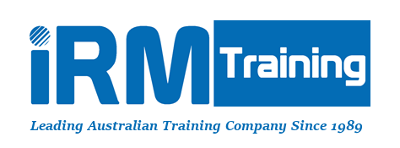Rich Pictures Welcome to Rich Pictures, the first of the IRM webinars dealing with topics that come up in our courses. Watch the webinar above or read the script below. My name is Colin Dent, I’m one of the presenters for IRM. If you’ve attended one of my courses welcome back. If you haven’t, well I’m one of the nicest presenters IRM’s got. So I’ll be doing this, the first of the webinars that IRM’s decided to do, just to…
Continue ReadingBPMN vs UML vs DFD – which one is best?
While many large companies still describe their requirements using the written word, there is a huge amount of evidence that pictures (i.e. modelling languages) are a clearer and more reliable method of communication. A 2016 survey of Australian business analysts across 30 organisations (government, big business, SMEs) found that while 14% used one or more of the popular languages (DFD, UML, BPMN) regularly, the vast majority 76% did not or only very occasionally. This shows that a small number of…
Continue ReadingProcess Modelling 101
Not wishing to piggy back too much on My Kitchen Rules (currently screening on Australian television) but for business analysts who like cooking – and even those who don’t – here’s a fun exercise to practice your process modelling skills. If you like spending time in the kitchen, test your skills by translating something you’re familiar with into a process model. You’ll need to be objective and not rely on inside knowledge – just follow the instructions even if…
Continue ReadingHow to a Draw Data Flow Diagram
A data flow diagram (DFD) shows how the functions, or processes, of a system relate to each other via the data that flows between them. They are most valuable in showing ‘what’, (the logical view) but can also be used to show the ‘how’ (the physical view). Data Flow Diagram – a process modelling tool Data flow diagrams (DFD) show how the functions, or processes, of a system relate to each other via the data that flows between them. They are…
Continue ReadingThere’s More to Modelling than Runways and Catwalks
How often have you seen a TV clip from a fashion show – Milan, London, New York – and thought to yourself “What on earth are the models wearing?!”. Business analysts can be guilty of something similar. Sure it’s a model, but what does it mean, what’s it trying to say? In the fashion industry, models are used to communicate (to bring to life) a designer’s ideas and creations. But they also go one step further – helping us the…
Continue ReadingData Modelling & Object Oriented Development
At some stage in their working life, every business analyst will have some involvement with data modelling. They may need to model how data is (or will be) used or – if they only deal with requirements investigation – then someone else in the team will need to verify that the data to support new functions will be available. To produce a data model (a logical view of the data) the technique of choice has been, and still remains, the…
Continue ReadingEvent-Based Analysis & Modelling
Many business analysts mix structured techniques with UML and use events as the entry point to their analysis activity. An event can be any activity, action or business process where the system under investigation needs to respond. In this approach to business analysis, once the scope of the system has been identified, the first deliverable is a table (a list) of events. Event-based analysis aligns very well with UML and object-oriented development as both are based on how a system…
Continue ReadingHow To of Essential Modelling
Also called abstract or business modelling, essential modelling can be an extremely valuable tool for the business analyst. Instead of modelling how things are done (the current system), or how they might be done (a proposed system), we model what is done, or what might be done. For example the purpose of a Customer Service Department is to provide customers with a level of service they expect (or the company defines). Things like call centres and customer relationship management systems…
Continue ReadingUML – Business Context
“Where does UML fit?” is a common question among new (and not so new!) business analysts. We all know that the M stands for modelling but beyond this, perceptions start to differ. In its current form (V2.0) UML consists of 13 diagram types all of which provide a different view of a system. In the following extract from our Modelling Requirements with Use Case & the UML course manual we’ll take a brief look at which of the 13 diagrams…
Continue ReadingStakeholder Communications – Pictures not Words
Many people on our Business Analysis workshop ask why we use dataflow diagrams (DFDs). Why not Use Case…or even BPMN? After all DFDs have been around for 20 years, surely the world has moved on? Well, has it? The primary purpose of a business analyst is to communicate – to stakeholders and to solution providers – and when it comes to communication we all know that pictures (diagrams) are much more effective and less ambiguous than words. Remember the phrase “A…
Continue Reading